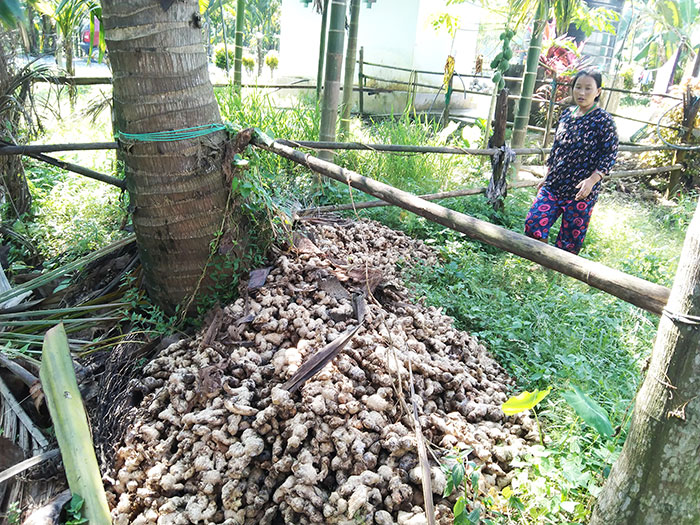Nima | Gelephu
The farmers from Singay gewog in Sarpang disposed of 2,985kg of ginger, after a coordinated effort to export the produce to India failed last week.
The regional agriculture marketing office in Gelephu and a local vendor from Gelephu with the help of the gewog agriculture extension office tried to export the produce.
The consignment loaded in a DCM truck from Singay and transhipped to an Indian truck. The truck crossed the border gate and was connected to a dealer in Dathgari, India.
“The dealer happened to check the package and found out that the gingers were not matured or ripe enough,” gewog agriculture extension officer, Thinley Wangdi said.
“Indian dealer rejected it. They said the consignment had to travel for days before reaching the destination and the gingers would be damaged by the time it reaches there,” he said.
The officials coordinating the export tried to convince the dealer by offering a discount but in vain. They also tried to sell the ginger to local vegetable vendors in Gelephu and Thimphu but there were no buyers.
Marketing officer with RAMCO, Dawa Dakpa, said: “We facilitated the export to help farmers sell their produce during the pandemic. It was exported informally with the help of a local vendor.”
He said that the package contained a mix of immature and mature gingers.
“Maybe farmers were unaware because they were exporting for the first time. Before lockdown, they have been selling fresh ginger in the local markets,” said Dawa Dakpa. “Our mandate was to link the farmers with the vendors.”
The official said that there is a need to train farmers in post-harvest techniques to avoid such kind of wastage in the future. “Only the good quality ginger would be accepted in the export market,” he said.
The agriculture products are not competitive in the export market because of subsistence farming practices which also incur a high cost of production.
On October 5 the consignment was brought back to the village and returned to the farmers. Today they are left to rot under areca nut trees and scattered by the roadside.
Farmers are disappointed and shattered.
San Man Subba sold the largest amount of ginger. He said chiwog tshogpa informed villagers to harvest the ginger. Today, he is seeking the gewog administration’s intervention.
“We were told that it would be exported to India but later, it was returned to us,” he said. “We worked hard for this. It is disappointing.”
He said that the farmers used to sell the produce, both matured and immature rhizomes to the local vendors in Wangdue and Punakha before the lockdown.
“I thought I could earn some cash during the lockdown which I needed. I couldn’t do any other work,” San Man Subba said.
The mother rhizomes are usually harvested and sold in June and in December from the gewog. “Only fresh ginger was available when the tshogpa told us to harvest it for export,” he said.
Another farmer, Gita Maya Rai does not trust the official narrative. “It’s discouraging. I had to invest a good amount while growing gingers,” she said.
The farmers could not sell her produce to other dzongkhags because of the pandemic. “I thought the gewog and the dzongkhag had arranged the marketing and I started to harvest. I was in need of money,” she said.
Gewog agriculture extension office had advised the farmers to dry the gingers to market it when buyers come. “There was no other means than to bring back the gingers. I had to do everything at last,” Thinley Wangdi said.
The official paid the transportation charges while bringing back the consignment. “Most farmers are experienced in ginger farming. It was not time to harvest,” said Thinley Wangdi.
Separate buyers for matured and immature gingers from India were identified when the export of gingers were done by food corporation of Bhutan before the pandemic.
Dawa Drakpa said such problems would be solved once the export of agriculture produce were streamlined with proper contingency plan in place.


